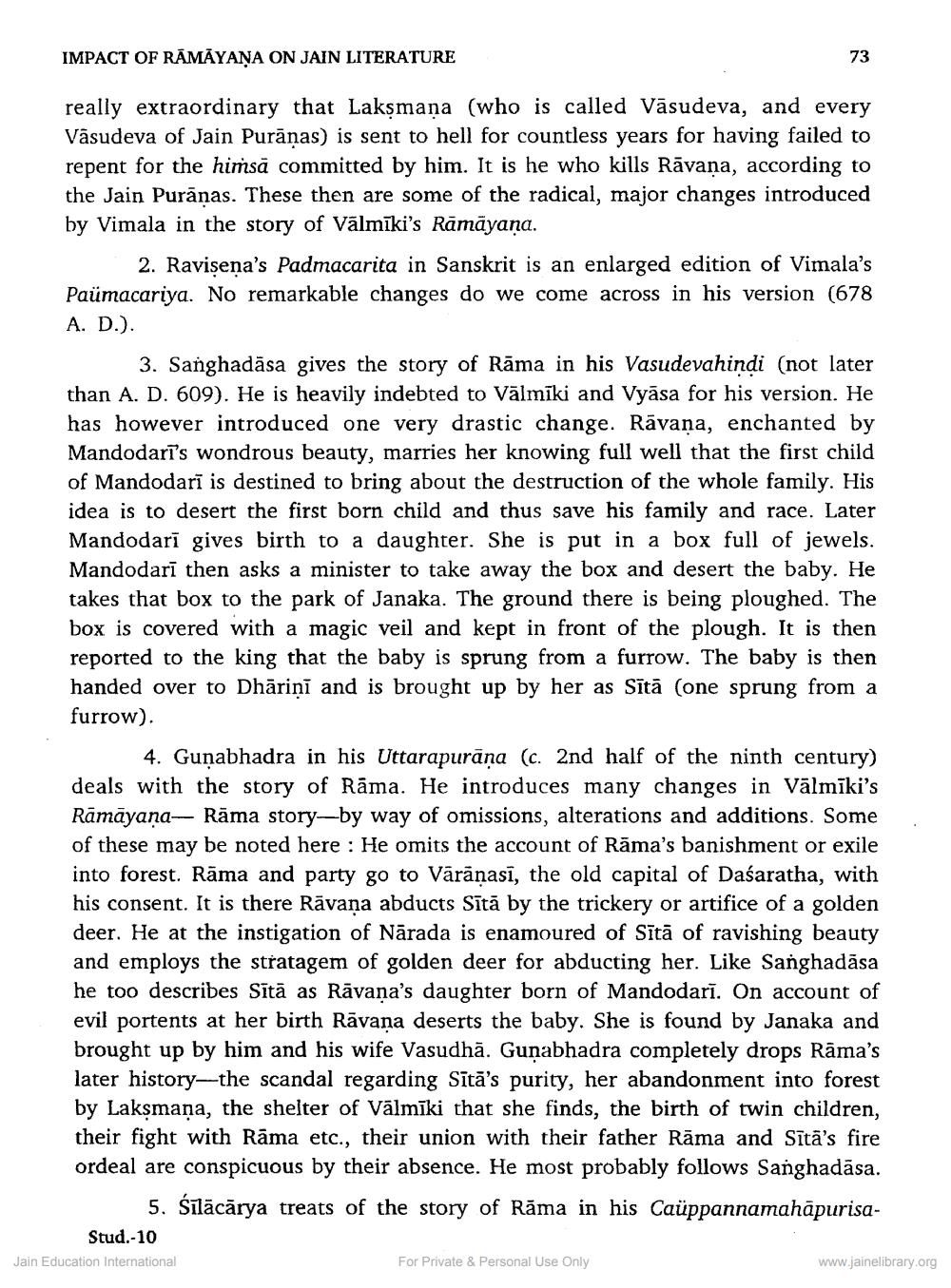________________
IMPACT OF RAMAYANA ON JAIN LITERATURE
really extraordinary that Lakṣmaṇa (who is called Vasudeva, and every Vasudeva of Jain Purāņas) is sent to hell for countless years for having failed to repent for the himsă committed by him. It is he who kills Rāvana, according to the Jain Puranas. These then are some of the radical, major changes introduced by Vimala in the story of Valmīki's Rāmāyaṇa.
2. Raviṣena's Padmacarita in Sanskrit is an enlarged edition of Vimala's Paümacariya. No remarkable changes do we come across in his version (678 A. D.).
73
3. Sanghadāsa gives the story of Rāma in his Vasudevahindi (not later than A. D. 609). He is heavily indebted to Valmīki and Vyāsa for his version. He has however introduced one very drastic change. Rāvana, enchanted by Mandodari's wondrous beauty, marries her knowing full well that the first child of Mandodari is destined to bring about the destruction of the whole family. His idea is to desert the first born child and thus save his family and race. Later Mandodari gives birth to a daughter. She is put in a box full of jewels. Mandodari then asks a minister to take away the box and desert the baby. He takes that box to the park of Janaka. The ground there is being ploughed. The box is covered with a magic veil and kept in front of the plough. It is then reported to the king that the baby is sprung from a furrow. The baby is then handed over to Dhāriņī and is brought up by her as Sītā (one sprung from a furrow).
4. Guṇabhadra in his Uttarapurāṇa (c. 2nd half of the ninth century) deals with the story of Rāma. He introduces many changes in Valmiki's Rāmāyaṇa- Rāma story-by way of omissions, alterations and additions. Some of these may be noted here: He omits the account of Rama's banishment or exile into forest. Rāma and party go to Vārāṇasī, the old capital of Dasaratha, with his consent. It is there Rāvana abducts Sītā by the trickery or artifice of a golden deer. He at the instigation of Nārada is enamoured of Sītā of ravishing beauty and employs the stratagem of golden deer for abducting her. Like Sanghadāsa he too describes Sītā as Rāvana's daughter born of Mandodari. On account of evil portents at her birth Rāvana deserts the baby. She is found by Janaka and brought up by him and his wife Vasudha. Gunabhadra completely drops Rama's later history-the scandal regarding Sītā's purity, her abandonment into forest by Lakṣmaṇa, the shelter of Valmiki that she finds, the birth of twin children, their fight with Rāma etc., their union with their father Rāma and Sītā's fire ordeal are conspicuous by their absence. He most probably follows Sanghadāsa. 5. Sīlācārya treats of the story of Rama in his Caüppannamahāpurisa
Stud.-10 Jain Education International
For Private & Personal Use Only
www.jainelibrary.org




